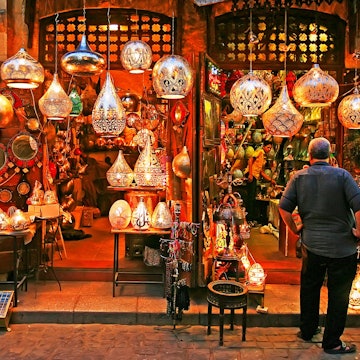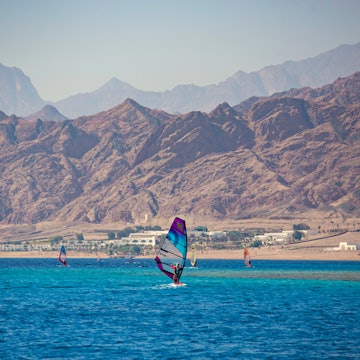

The Great Temple of Ramses II. Anton_Ivanov/Shutterstock
Overlooking Cairo from a sandy plateau, the Pyramids of Giza are the last surviving wonders of the ancient world. They are undoubtedly Egypt’s most-visited attraction, especially with the hyped-for-years Grand Egyptian Museum opening soon just a short distance away. But farther south on the Nile River, the essential artery that blesses the otherwise barren sands of the Sahara with life, the tombs and temples of southern Egypt harbor their own mysteries, ready to be unlocked.
Seeing these magnificent ancient sites in person allows them to come to life more than they ever could behind glass in a foreign museum. From Luxor, nicknamed “the world’s largest open-air museum,” along the Nile to Aswan and beyond, southern Egypt’s temples and tombs stand with their doors open, inviting modern-day detectives to uncover the secrets and riddles of this ancient civilization.
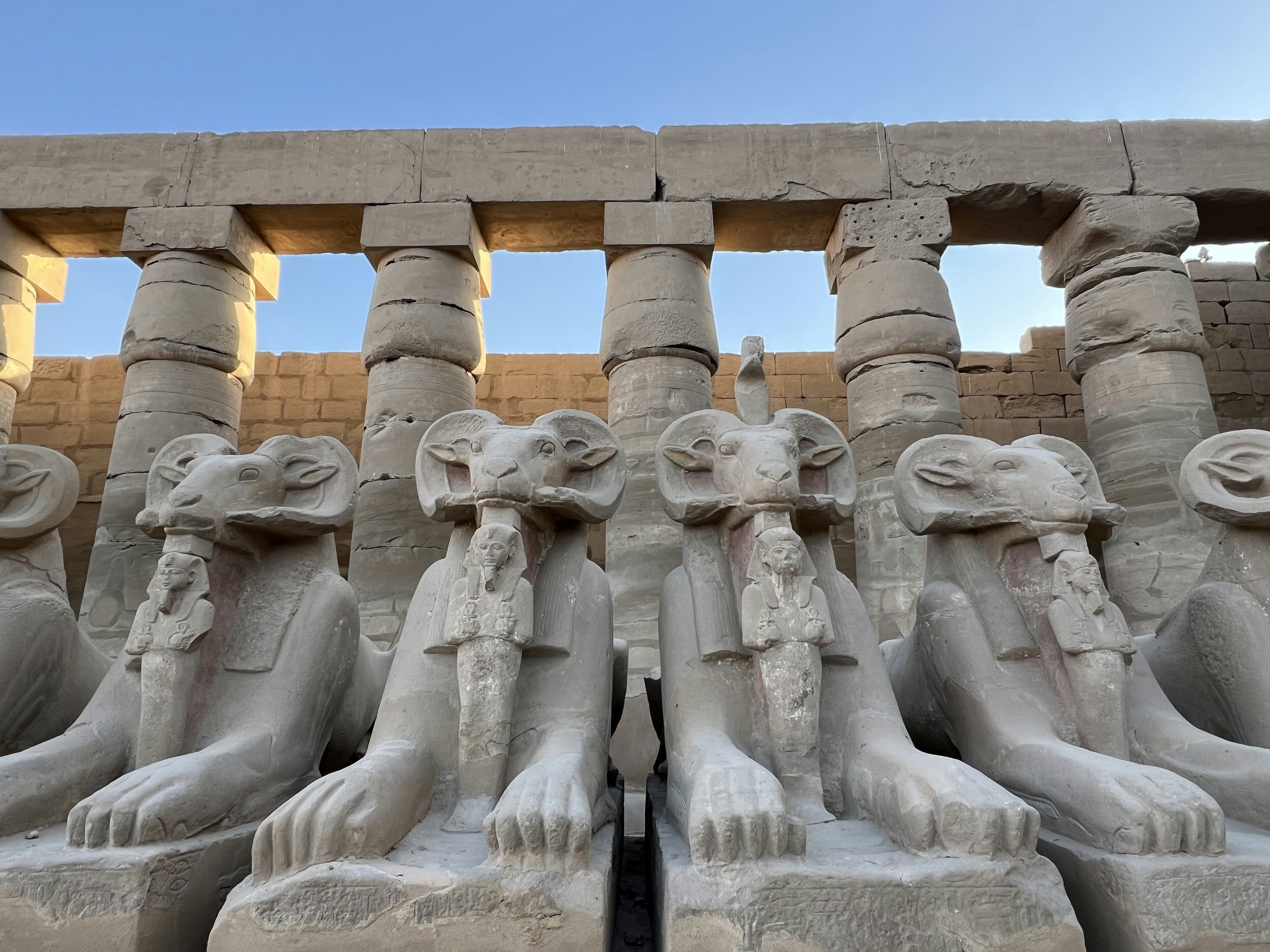
1. Karnak Temple Complex, Luxor
Best for layers of history
Karnak was the Vatican City of its day, and it remains Egypt’s largest temple complex. It’s hard to overstate its significance, and the ancient Egyptians called it Ipet-Sut (Most Esteemed of Places). Ten cathedrals could be stuffed inside the space, which covers nearly a full square mile and contains multiple temples, chapels, obelisks, monumental gateways known as pylons and a sacred pool for offerings. Some visitors never make it past the gargantuan Temple of Amun-Ra. This terrestrial “home” of the king of the gods sprouts a forest of 134 33ft-tall, hieroglyph-covered columns ranging in height, with some over 60 feet tall. But the site has plenty more to explore, and some areas are still being excavated.
Karnak’s secret lies at its entrance, and it’s tempting to rush straight past the bland, undecorated enclosure walls to explore the treasures within. Over a span of 1500 years, 30 pharaohs constructed, chopped, changed, razed and rebuilt Karnak to their liking. The farther you walk into the complex from the main entrance, the further back in time you travel, making the area that you first enter comparatively new. So new in fact that construction was never completed, and the remnants of the mud-brick ramps that workers used to assemble this gateway still lie there waiting to finish the job millennia later.
Planning tip: Opened to the modern public for the first time in 2021, the Avenue of Sphinxes, an ancient 1.7-mile pedestrian walkway lined with ram-headed sculptures (a few of which are still in situ), connects Karnak and Luxor Temple, which can be a great way to visit both on the same day. Karnak is almost always included on Nile cruise itineraries.
2. Luxor Temple
Best for an evening visit
Far smaller than Karnak but still impressive in its own right, Luxor Temple has a monumental entranceway anchored by two colossal statues of Ramses II, one of ancient Egypt’s greatest leaders and a man who loved to show his power by plastering his face on his kingdom’s monuments. Set in the middle of the ancient Egyptian capital of Thebes, Luxor Temple has been in almost continuous use as a place of worship since its construction in the 14th century BCE. It was originally built to honor the pharaohs and gods idolized by the ancients, but if you look closely enough, you’ll find evidence of more modern religions.
Set above the ground floor of the temple and embedded right into its walls are the foundations of Abu Haggag Mosque, which was constructed in medieval times. Luxor Temple was nearly entombed under centuries of debris and rubble, which had formed a new artificial ground level that locals started building on, meaning that the original front door of the mosque is now precariously perched halfway up a wall.
The mosque isn’t much of a secret, especially if you happen to visit during the azan (call to prayer), which will rattle your eardrums if you’re standing right below the minarets. But tucked farther away in the complex are faded paintings from the early Christian era, delicately plastered over the hieroglyphs. The muted faces gaze curiously toward the original decorations of a seated Egyptian god surrounded by a ring of etched cobras and cartouches.
Planning tip: Many of Egypt’s ancient sites close by 5pm, but Luxor Temple remains open later. Last entry is at 7pm, and you can stay at the site for an hour or so after that. At dusk, the complex is floodlit, making the imposing columns look even more impressive.
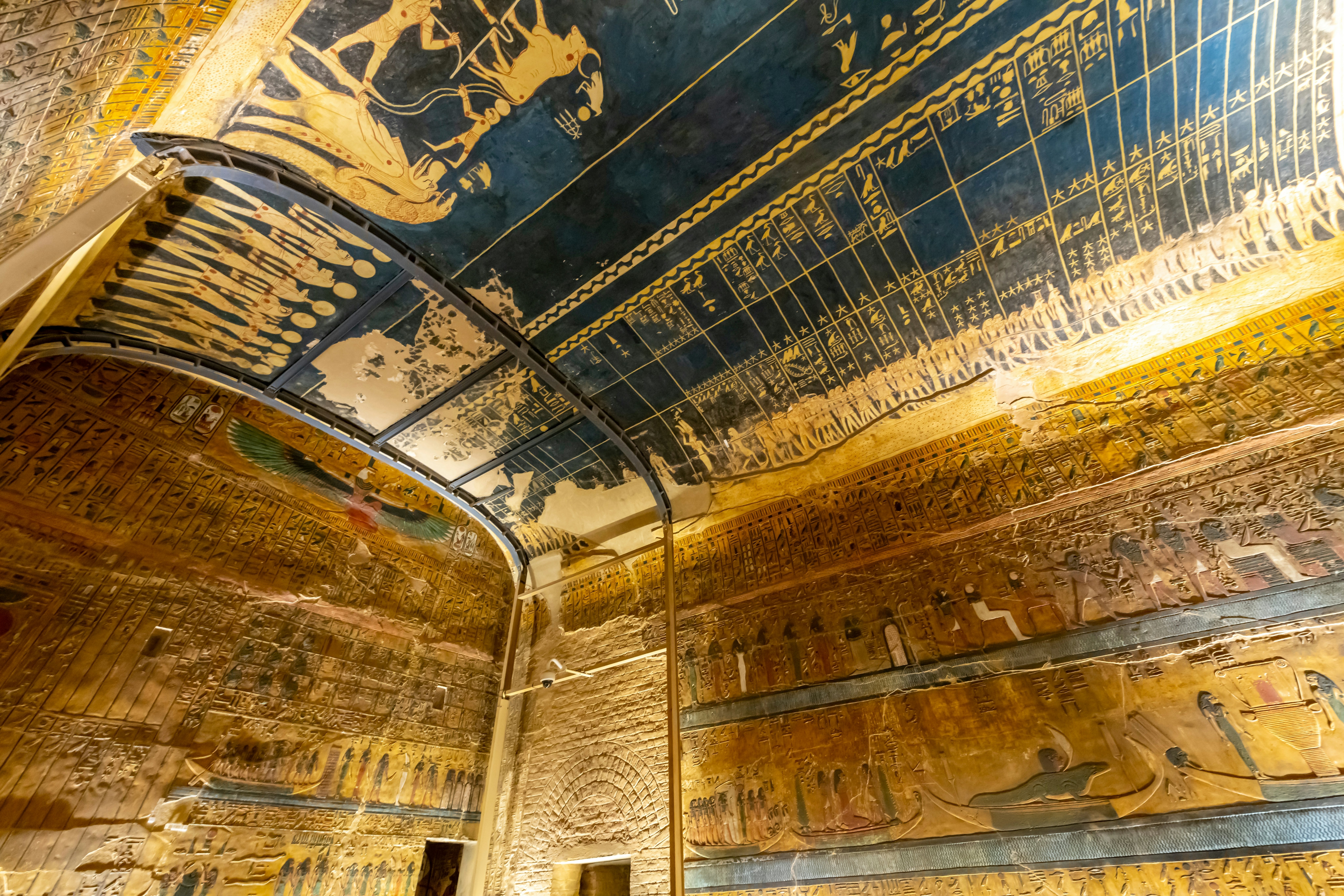
3. Tomb of Seti I, Valley of the Kings
Best for vibrant colors
In ancient times, the west bank of the Nile, where the setting sun throws its last rays over the golden sands of the desert, was considered the home of the dead, while the east bank, the first to greet the morning light, was the home of the living. The hills west of Luxor hide Egypt’s largest pharaonic necropolis, the Valley of the Kings. From the outside, the tombs hardly look worthy of their royal occupants, with plain, simple entryways carved into the rock, but step inside to see the best examples of art still surviving from the ancient world.
More than 60 tombs have been discovered in the Valley of the Kings, but only a dozen or so are open to the public at any given time. Lesser visited because of its high entrance fee (LE2000, about $41, on top of the $15 entry to the valley), the Tomb of Seti I is immaculate and might be the highlight of your trip to Egypt.
Seti I’s tomb feels like a secret in plain sight, and it’s worth the splurge. It’s one of Egypt’s greatest not-talked-about wonders, even though it’s full of superlatives. This tomb is the longest, deepest and most complete of any in the Valley of the Kings, and its art set the precedent for every subsequent tomb constructed here. The first to have paintings covering every passageway, Seti I's 450ft-long tomb is a monument to a golden age of art in ancient Egypt. Stars dot the ceiling, which is painted as black as the night sky. Vivid scenes of Seti I with the gods and passages from the Book of the Dead and other ancient funerary texts are splashed across every wall, as well as the barrel-vaulted ceiling (the first of its kind) in the burial chamber. Two decades of restoration that wrapped up in 2016 cleared layers of dust and dirt from the paintings, leaving the paintings so fresh that it looks like the artists could have finished them yesterday.
Planning tip: The tombs in the Valley of the Kings, the most-visited tourist site in Luxor, were not built for the crowds that descend on it today. For a quieter experience, book with a tour operator like Viking that offers exclusive after-hours access or go early or late in the day. Waiting in long lines with zero shade can turn what should be an incredible experience into a recipe for heat exhaustion, so come prepared.
4. Carter House, Luxor
Best for getting close to Tutankhamun
Tutankhamun, the golden “boy pharaoh” who died at age 18 or 19, didn’t make much of a splash in his lifetime, but thanks to the highly publicized uncovering of his treasure-filled tomb by British archaeologist Howard Carter in 1922, Tut is sometimes the only ancient Egyptian ruler with name recognition for modern travelers. Tutankhamun’s tomb is in the Valley of the Kings, built in haste because of his early and untimely death, but a better way to see it is to visit nearby Carter House, the mud-brick home where the archaeologist lived while searching for the elusive tomb.
Not well advertised, a full-size model of Tut’s tomb has been constructed in the house’s back garden. While some travelers turn their nose up at a replica, visiting this way is actually a more sustainable approach. Paintings in the tombs in the Valley of the Kings are deteriorating because of high humidity caused by visitors breathing inside the enclosed spaces. Unlike the original, the replica tomb is wheelchair accessible, and you can walk down into the burial area and get close to the wall paintings around the recreated sarcophagus, which isn’t allowed in the actual tomb.
Planning tip: Carter House isn’t included on standard Egypt itineraries, so if you want to visit, make sure you’ve left a day or two extra in your schedule to stay in Luxor. Tickets cannot be bought in person, so scan the on-site QR code or visit the website of the Egyptian Ministry of Tourism and Antiquities to buy a ticket online in advance.
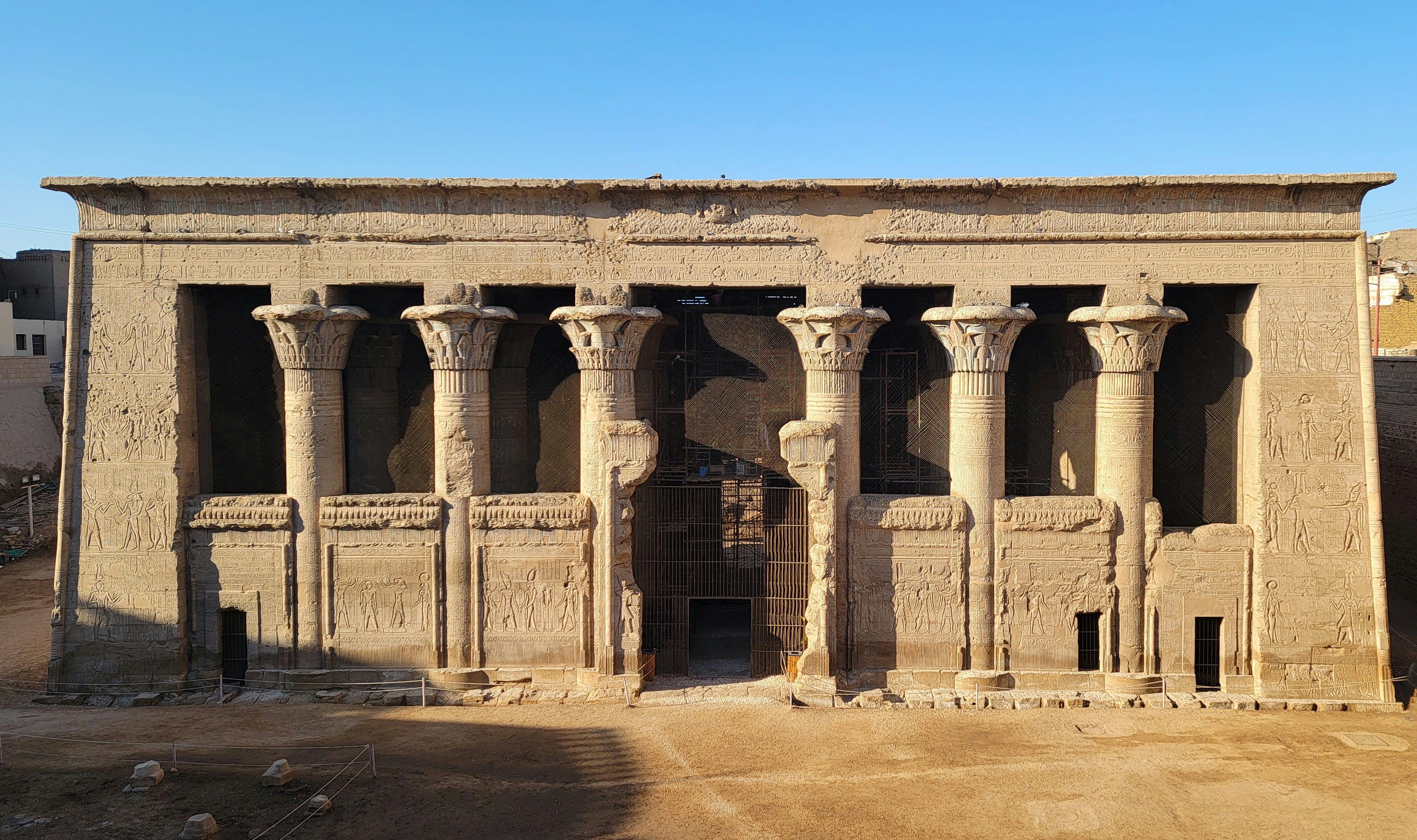
5. Temple of Khnum, Esna
Best for getting off the beaten track
Though it’s on the Nile close to Luxor, the gorgeous Temple of Khnum doesn’t feature on as many Egypt itineraries as it should. Dedicated to the ram-headed creator god, this temple was constructed in the Roman era and features playfully bright colors splashed across the ceiling and the 18 column capitals, each of which is unique and well preserved thanks to the structure being buried in sand and silt until the 19th century.
The colors have gotten a further glow-up thanks to ongoing restoration efforts over the last decade, which have removed centuries of grime and soot. Look for the small blackened square on the ceiling to see just how dingy it looked like before cleaning began.
Planning tip: Large Nile cruisers can’t dock at Esna because it doesn’t have the infrastructure, so they bypass it, but some dahabiyas (smaller boats with two sails), like those from Nour El Nil, start their trips with a visit to the Temple of Khnum. You can also take a day trip from Luxor to Esna, about 1.5 hours by car.
6. Temple of Horus, Edfu
Best for intact architecture
Built in honor of the falcon-headed god, the Temple of Horus is one of the best preserved in Egypt. It’s one of the few with its roof still in place, making it much easier to feel what atmosphere of the inner sanctuaries must have been like thousands of years ago, as you gradually venture from bright desert sun into cool and still darkness. Its late construction, which started only 2700 years ago, has likely contributed to its preservation, but that’s not to say that it hasn’t been modified since.
Hidden among the hieroglyphs on the back enclosing wall is a curious carving. Chopped away from the original stone is a surprising symbol of a fish, a Christian badge that gives a small hint of the later uses of this temple and how its congregants started to worship a new religious figure, Jesus Christ. Look up as you’re walking through Edfu’s inner rooms to see the sooty black residue left from fire burned here after Christianity was adopted and pagan temples like this were ordered to be closed.
Planning tip: Edfu, midway between Luxor and Aswan, is a standard stop on all Nile cruise itineraries. Ships tend to dock in the morning, so if you’re visiting independently, head here in the afternoon to avoid the crowds.
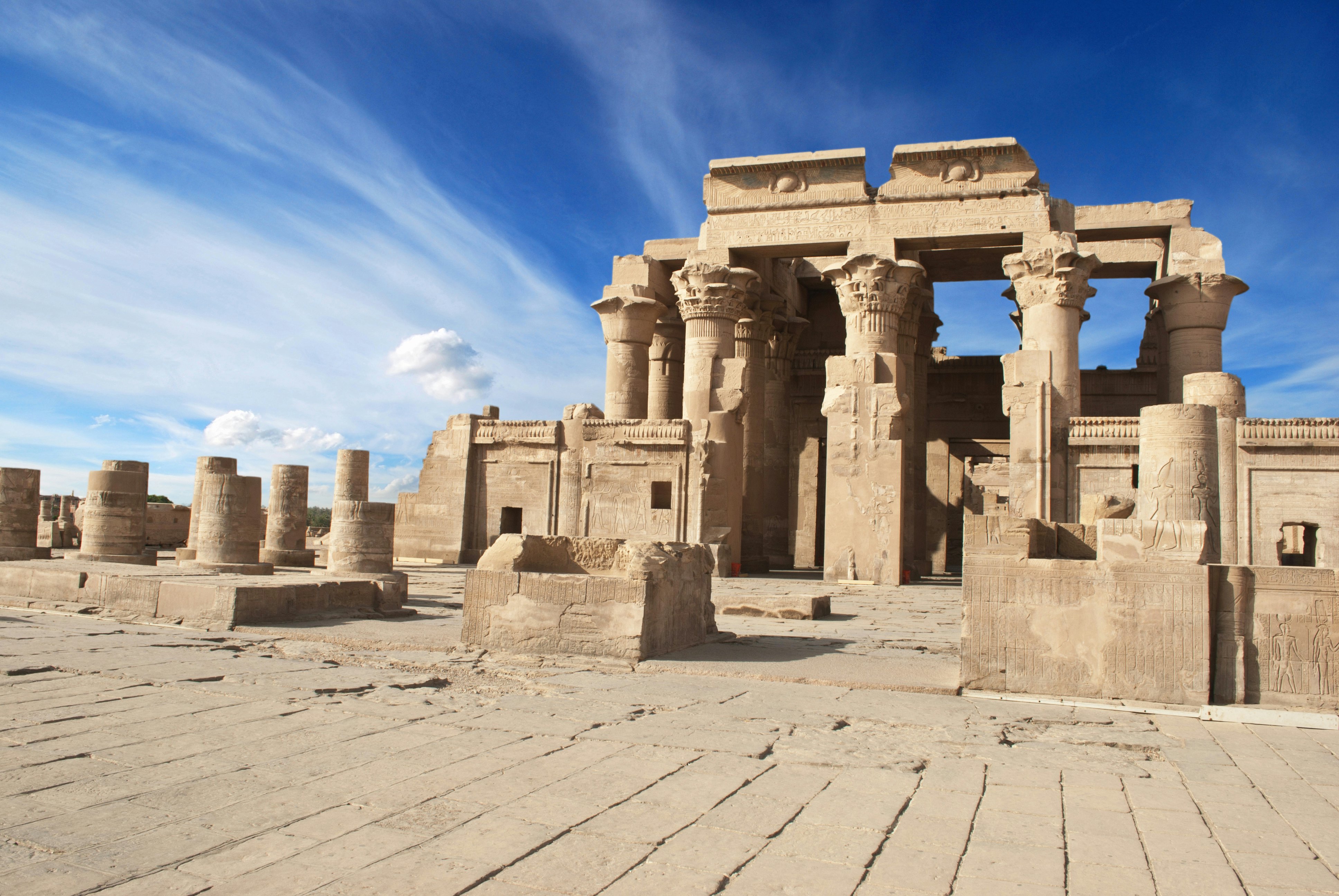
7. Temple of Kom Ombo
Best for a two-for-one deal
On a bend in the Nile near Aswan, the Temple of Kom Ombo, Egypt’s only double temple, was dedicated to two gods: the crocodile deity Sobek and falcon-headed Horus. Nile crocodiles would freely roam the temple grounds and were mummified when they died. More than 300 croc mummies have been unearthed around the premises and are now on display at the Crocodile Museum near the temple’s exit.
Along with Horus' other divine duties, the ancients believed that he was a doctor, and they would flock to Kom Ombo for healing. Hieroglyphs on the back wall of the temple are thought to be the first depictions of medical tools ever recorded. About 40 medical instruments are carved here, from forceps and scalpels to knives and a vase with ever-burning incense.
Planning tip: Kom Ombo is another rare temple that stays open late – last entry is at 8pm. By that hour, most visitors and cruise ships have long since departed, so this can be a peaceful time to come. Some long Nile cruises, which run between Cairo and Aswan, make evening stops at Kom Ombo.
8. Temple of Isis, Aswan
Best for an island setting
At ancient Egypt’s southern frontier, the Temple of Isis on the island of Agilkia was one of the last pagan temples to operate after the arrival of Christianity. It’s more commonly known as Philae Temple, after its original island location. The rising seasonal waters of the Nile would partially submerge the temple, and the flooded remains were a favorite of Victorian explorers who rowed their boats among the columns and kiosks. Dam construction projects in the 20th century threatened to drown the temple entirely, so after UNESCO intervention, it was moved block by block to higher ground on Agilkia.
This temple is thought to be where the last hieroglyph was inscribed, carved in 394 CE, before Christianity became more widespread. Many reliefs of the ancient Egyptian gods at this temple are defaced, and Christian symbols have been carved out of some, including a number of Coptic crosses and an altar.
Planning tip: The temple is set between two dams – the Aswan Low Dam and the Aswan High Dam – so you have to take a small motorboat to reach it; Nile cruises can’t get here directly. If you’re sticking around Aswan for a few days, it’s worth staying at the secluded accommodations on the nearby islands. BenBen By Dhara Hotels, with its epic views and private outdoor hot tubs, is a favorite.
9. Great Temple of Ramses II, Abu Simbel
Best for a timed-right temple visit
Chipped into the side of a mountain, the Great Temple of Ramses II at Abu Simbel looks intimidating. Four 66ft-high stern-faced statues of the famous pharaoh guard the entrance. The ever-shifting Sahara sands had covered the structure up to the statues’ shoulders when Swiss explorer Johan Ludwig Burckhardt accidentally stumbled across it in 1813, fresh from rediscovering Petra for the West a year earlier.
Like Philae Temple, the temples of Abu Simbel, imperiled by rising river waters from the construction of dams on the Nile, were moved to higher ground in 1968. The original temple was orientated so that each year on February 21 and October 21 (Ramses II’s birthday and coronation day), light from the sunrise illuminated part of the dark chambers, where statues of three gods and another carving of Ramses II sit. However, since the temple’s relocation, the illumination now happens a day later, on the 22nd.
Planning tip: Because of the dams in Aswan, Nile cruises must end there, but you can take a separate cruise around Lake Nasser, which starts or ends at Abu Simbel and visits the little-seen temples at the water’s edge that were also rescued. Most visitors reach Abu Simbel by flight or a long pre-dawn drive from Aswan, but joining a Lake Nasser cruise means that you’re able to visit in the quieter afternoon.
Top tips for visiting Egypt’s tombs and temples
It’s worth hiring a guide for your explorations, because signage is nearly nonexistent at Egypt’s tombs and temples. Guides are not permitted inside the tombs at the Valley of the Kings, but they explain the details outside before you enter.
In 2023, all of Egypt’s archaeological sites run by the Ministry of Antiquities went cash free, so you now have to buy tickets online using a card. Some of the popular sites, including the Valley of the Kings, have on-site kiosks for purchasing tickets with a card.
Many of these ancient sites are huge. Come prepared for a lot of walking under the hot Egyptian sun. Wear sturdy closed-toe shoes, a hat and sunscreen, and bring plenty of water.













